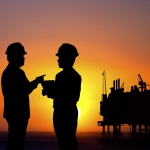
©iStock.com/vitchanan
Rigzone recently published an article regarding FACT/FAKE news bias and there were some good points to be made, for sure. We’d like to add a few items to the position of the article, as well.
Brookwoods Group has been part of oil and gas company communication and marketing teams for two decades and many of our assignments have been in public, community, and media relations. Even though much of the writing done by communicators in these role was for internal consumption, company’s public, media, and community relations efforts usually focus on external audiences via local/regional/national/international distribution channels. And this information never fully goes away (even a lot of internal corporate communications, as well), thus the fact-checking can go on over a span of decades with live meaningful edits as we progress in the field of technologies used for capture, expulsion, and refining to final use.
One of the interesting things not pointed out in the article is that many of the global oil and gas companies not only deal in “old technology”, but also with “newer advanced technologies”, most of which still rely on the “old technology” to keep the “new technology” running. This can’t be an all or nothing quest. We must continue to find the balancing act of using all our resources without depletion or further damaging the environment and it’s a tight rope we’re walking.
We must continue to be diligent in our word usage and urge the utmost care in the editing process. Our storytelling must be true and told in good faith. When the story is heading in a direction we’d prefer it not, we must bridge the story back to reality and not allow the conversation to plummet into the abyss of doom and gloom.
Energy is a necessary tool for each of us, including all those who protest energy resource gathering by driving their vehicles (not bicycles or horses) to the location to protest, while wearing clothes, shoes, etc. made with petroleum products, and using their cell phones to chronicle the events, and at times boarding their plastic kayaks to reach water locations in order to make a point. But the real point that they are missing is how they got there and what they are using to continue to tell their own stories. Perhaps we need to come together and explain the real story of how we can work together to produce and best use the resources we need in the safest and most environmentally friendly manner possible instead of using unrealistic tactics as click bait.
The best advice we provide is to be authentic in everything – the good, the bad, and the ugly. At the very least, you know you’ll be doing your best to keep the conversation real.